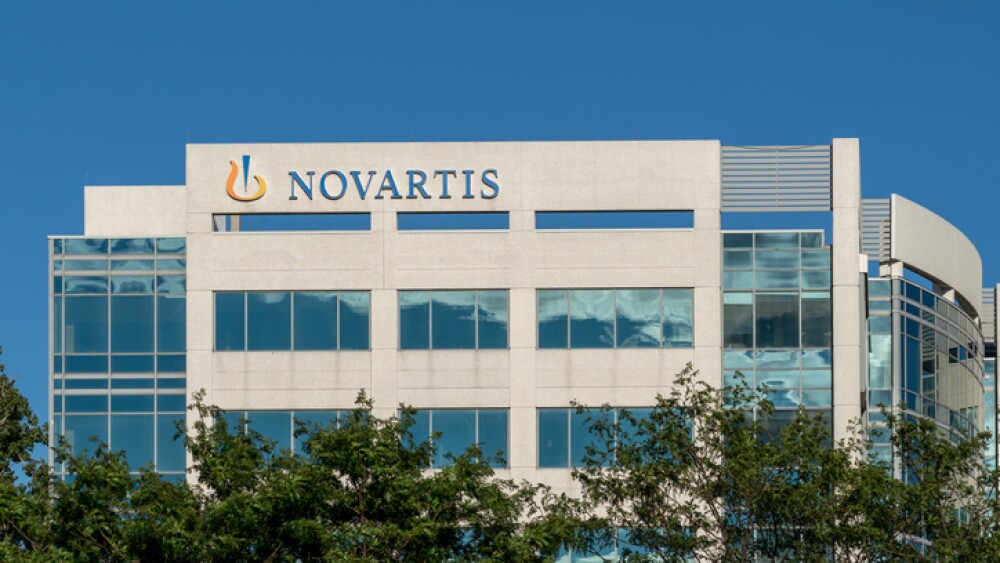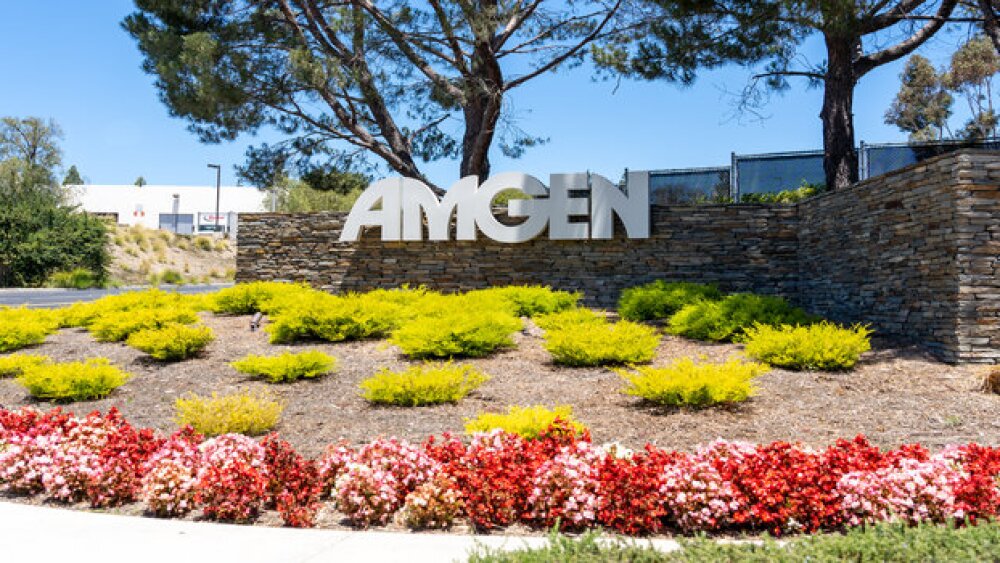CAMBRIDGE, Mass.--(BUSINESS WIRE)--Biogen (NASDAQ: BIIB) will present robust efficacy and safety data from Phase 2 and 3 SPINRAZA® (nusinersen) studies at the Cure SMA 2017 Annual SMA Conference in Orlando, Fl, June 29 – July 2, 2017. The breadth of data presented reinforces the significant and clinically meaningful efficacy of SPINRAZA on the achievement of motor milestones and measures of motor function across a broad range of individuals with spinal muscular atrophy (SMA), as well as on survival endpoints in infantile-onset SMA.
“Data presented at the Cure SMA 2017 Annual SMA Conference further demonstrate the significant impact of SPINRAZA and the benefits of early treatment initiation. We are encouraged to see unprecedented motor function gains in infants on permanent ventilation and a continued favorable benefit-risk profile across a broad population including no increase in risk of adverse events in children who have developed scoliosis.” said Wildon Farwell, M.D., M.P.H., senior medical director, Clinical Development, Biogen. “As part of our mission to make a meaningful difference in the lives of those affected by SMA, we continue to collect and evaluate data to provide a deeper understanding of the impact of SPINRAZA across SMA populations and share those results with the SMA community.”
New SPINRAZA Data Show Robust Efficacy and Safety Across Broad Range
of Individuals with SMA
In an analysis of the Phase 3 ENDEAR
end of study results, a greater proportion of infants with SMA on
permanent ventilation treated with SPINRAZA demonstrated clinical
benefits compared to untreated infants.
End of study data from both the Phase 3 ENDEAR and CHERISH studies further demonstrate that earlier SPINRAZA treatment in individuals with SMA may lead to improved outcomes. In individuals with shorter disease durations (i.e., generally younger at symptom onset), infants in ENDEAR demonstrated a lower risk of death or permanent ventilation and children in CHERISH demonstrated greater motor function improvement from baseline to 15 months compared to untreated individuals.
In addition, further results from the interim analysis of the Phase 2 NURTURE study highlight the clinically meaningful efficacy of SPINRAZA on event-free survival, measures of motor function and achievement of motor milestones when administered to infants with genetically-diagnosed SMA before symptom onset.
“New SPINRAZA data continue to reinforce the positive results seen in clinical studies and in my own practice,” said Thomas Crawford, M.D., co-director, Muscular Dystrophy Association Clinic at Johns Hopkins Medicine. “The SPINRAZA clinical development program demonstrates the impact of early treatment. The additional NURTURE data extends this finding by showing substantial improvements in motor milestones, generally consistent with normal development among infants with SMA who have yet to manifest symptoms before they were treated with SPINRAZA.”
SPINRAZA demonstrated a favorable benefit-risk profile, with commonly reported adverse events consistent with those expected in the general SMA population or related to a lumbar puncture procedure. Safety data involving the intrathecal administration of SPINRAZA showed the incidence and nature of the most common lumbar puncture-related adverse events were similar in children with later-onset SMA with or without scoliosis in the clinical studies.
Biogen to Participate in 15 Presentations at the Meeting
Select
SPINRAZA data highlights are included below:
- Infants and children with SMA treated with nusinersen in clinical trials: Experience of risk for respiratory or other events with repeat anesthesia/sedation for intrathecal administration. June 29, 2017: 4:30-6:30 p.m. ET
- Infants and children with SMA treated with nusinersen in clinical trials: An integrated safety analysis. June 30, 2017: 12:45 p.m.-2:45 p.m. ET
- Nusinersen demonstrates efficacy in infants with and without permanent ventilation: Final results from the ENDEAR study. July 1, 2017: 11:00 a.m. ET
- Efficacy and safety of nusinersen in genetically diagnosed infants with presymptomatic spinal muscular atrophy (SMA): Results from the second interim analysis of the ongoing, phase 2 NURTURE study. July 1, 2017: 11:20 a.m. ET
- Efficacy and safety of nusinersen in children with later-onset spinal muscular atrophy (SMA): End of study results from the phase 3 CHERISH. July 1, 2017: 11:40 a.m. ET
For more information about SPINRAZA and U.S. prescribing information, visit www.SPINRAZA.com.
SPINRAZA Program Status
SPINRAZA was first approved by the
U.S. Food and Drug Administration (FDA) for the treatment of SMA in
pediatric and adult patients on December 23, 2016 within three months of
regulatory filing. The European Commission (EC) granted a marketing
authorization for SPINRAZA for the treatment of 5q SMA on June 1, 2017,
making SPINRAZA the first approved treatment in the European Union for
SMA.
Biogen has also submitted regulatory filings in Japan, Canada, Australia, Switzerland, and Brazil and plans to initiate additional filings in other countries in 2017.
Biogen licensed the global rights to develop, manufacture and commercialize SPINRAZA from Ionis Pharmaceuticals (NASDAQ: IONS), a leader in antisense therapeutics. Biogen and Ionis conducted an innovative clinical development program that moved SPINRAZA from its first dose in humans in 2011 to its first regulatory approval in five years.
About SMA 1-5
Spinal muscular atrophy
(SMA) is characterized by loss of motor neurons in the spinal cord and
lower brain stem, resulting in severe and progressive muscular atrophy
and weakness. Ultimately, individuals with the most severe type of SMA
can become paralyzed and have difficulty performing the basic functions
of life, like breathing and swallowing.
Due to a loss of, or defect in, the SMN1 gene, people with SMA do not produce enough SMN protein, which is critical for the maintenance of motor neurons. The severity of SMA correlates with the amount of SMN protein. People with Type 1 SMA, the form that requires the most intensive and supportive care, produce very little SMN protein and do not achieve the ability to sit without support or live beyond two years without respiratory support. People with Type 2 and Type 3 SMA produce greater amounts of SMN protein and have less severe, but still life-altering forms of SMA.
About SPINRAZA® (nusinersen)
SPINRAZA
is being developed globally for the treatment of SMA.
SPINRAZA is an antisense oligonucleotide (ASO), using Ionis Pharmaceuticals’ proprietary antisense technology, that is designed to treat SMA caused by mutations or deletions in the SMN1 gene located in chromosome 5q that leads to SMN protein deficiency. SPINRAZA alters the splicing of SMN2 pre-mRNA in order to increase production of full-length SMN protein.6 ASOs are short synthetic strings of nucleotides designed to selectively bind to target RNA and regulate gene expression. Through use of this technology, SPINRAZA has the potential to increase the amount of full-length SMN protein in individuals with SMA.
SPINRAZA must be administered via intrathecal injection, which delivers therapies directly to the cerebrospinal fluid (CSF) around the spinal cord,7 where motor neurons degenerate in individuals with SMA due to insufficient levels of survival motor neuron (SMN) protein.8
SPINRAZA demonstrated a favorable benefit-risk profile. The most common adverse reactions reported for SPINRAZA were upper respiratory infection, lower respiratory infection and constipation. Serious adverse reactions of atelectasis were more frequent in SPINRAZA-treated patients. Coagulation abnormalities and thrombocytopenia, including acute severe thrombocytopenia, have been observed after administration of some antisense oligonucleotides. Individuals may be at increased risk of bleeding complications. Renal toxicity has been observed after administration of some antisense oligonucleotides. SPINRAZA is present in and excreted by the kidney.
About Biogen
Through cutting-edge science and medicine,
Biogen discovers, develops and delivers innovative therapies worldwide
for people living with serious neurological and neurodegenerative
diseases. Founded in 1978, Biogen is a pioneer in biotechnology and
today the Company has the leading portfolio of medicines to treat
multiple sclerosis, has introduced the first and only approved treatment
for spinal muscular atrophy, and is at the forefront of neurology
research for conditions including Alzheimer’s disease, Parkinson’s
disease and amyotrophic lateral sclerosis. Biogen also manufactures and
commercializes biosimilars of advanced biologics. For more information,
please visit www.biogen.com.
Follow us on social media – Twitter,
LinkedIn,
Facebook,
YouTube.
Biogen Safe Harbor
This press release contains
forward-looking statements, including statements made pursuant to the
safe harbor provisions of the Private Securities Litigation Reform Act
of 1995 relating to the potential benefits, safety and efficacy of
SPINRAZA, the results of certain real-world data, the status of current
regulatory filings, plans for additional regulatory filings in other
jurisdictions, planning and timing for commercial launch, and
availability of patient access and reimbursement pathways, which may
vary on a country-by-country basis. These forward-looking statements may
be accompanied by words such as “anticipate,” “believe,” “could,”
“estimate,” “except,” “forecast,” “intend,” “may,” “plan,” “potential,”
“possible,” “will” and other words and terms of similar meaning. You
should not place undue reliance on these statements or the scientific
data presented. Drug development and commercialization involve a high
degree of risk. These statements involve risks and uncertainties that
could cause actual results to differ materially from those reflected in
such statements, including without limitation uncertainty of success in
commercialization of SPINRAZA, which may be impacted by, among other
things, the level of preparedness of healthcare providers to treat
patients, difficulties in obtaining or changes in the availability of
reimbursement for SPINRAZA, the effectiveness of sales and marketing
efforts, problems with the manufacturing process for SPINRAZA, the
occurrence of adverse safety events, unexpected concerns that may arise
from additional data or analysis; regulatory authorities may require
additional information or further studies, or may fail to approve or may
delay approval of Biogen’s drug candidates or expansion of product
labeling; or Biogen may encounter other unexpected hurdles which may be
impacted by, among other things, the occurrence of adverse safety
events, failure to obtain regulatory approvals in certain jurisdictions,
failure to obtain regulatory approvals in other jurisdictions, failure
to protect intellectual property and other proprietary rights; product
liability claims; or third party collaboration risks. The foregoing sets
forth many, but not all, of the factors that could cause actual results
to differ from our expectations in any forward-looking statement.
Investors should consider this cautionary statement, as well as the risk
factors identified in Biogen’s most recent annual or quarterly report
and in other reports Biogen has filed with the U.S. Securities and
Exchange Commission. These statements are based on our current beliefs
and expectations and speak only as of the date of this press release. We
do not undertake any obligation to publicly update any forward-looking
statements, whether as a result of new information, future developments
or otherwise.
1. Darras B, Markowitz J, Monani U, De Vivo D. Chapter 8 - Spinal Muscular Atrophies. In: Vivo BTD, ed. Neuromuscular Disorders of Infancy, Childhood, and Adolescence (Second Edition). San Diego: Academic Press; 2015:117-145.
2. Lefebvre S, Burglen L, Reboullet S, et al. Identification and characterization of a spinal muscular atrophy-determining gene. Cell.1995;80(1):155-165.
3. Mailman MD, Heinz JW, Papp AC, et al. Molecular analysis of spinal muscular atrophy and modification of the phenotype by SMN2. Genet Med. 2002;4(1):20-26.
4. Monani UR, Lorson CL, Parsons DW, et al. A single nucleotide difference that alters splicing patterns distinguishes the SMA gene SMN1 from the copy gene SMN2. Hum Mol Genet. 1999;8(7):1177-1183.
5. Peeters K, Chamova T, Jordanova A. Clinical and genetic diversity of SMN1-negative proximal spinal muscular atrophies. Brain.2014;137(Pt 11):2879-2896.
6. Hua Y, Sahashi K, Hung G, Rigo F, Passini MA, Bennett CF, Krainer AR. Antisense correction of SMN2 splicing in the CNS rescues necrosis in a type III SMA mouse model. Genes Dev. 2010 Aug 1; 24(15):16344-44.
7. Evers MM, Toonen LJ, van Roon-Mom WM. Antisense oligonucleotides in therapy for neurodegenerative disorders. Adv Drug Deliv Rev. 2015;87:90-103.
8. Lunn MR, Wang CH. Spinal muscular atrophy. Lancet. 2008;371(9630):2120-2133.
Biogen
MEDIA CONTACT:
Hailee Tellier, +1
617-914-6778
public.affairs@biogen.com
or
INVESTOR
CONTACT:
Ben Strain, +1 781-464-2442
IR@biogen.com



